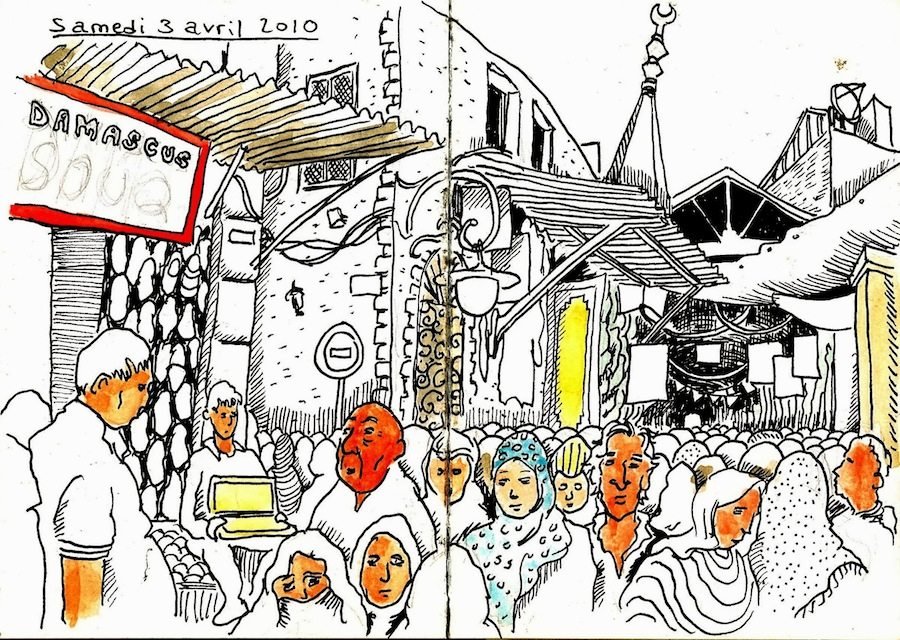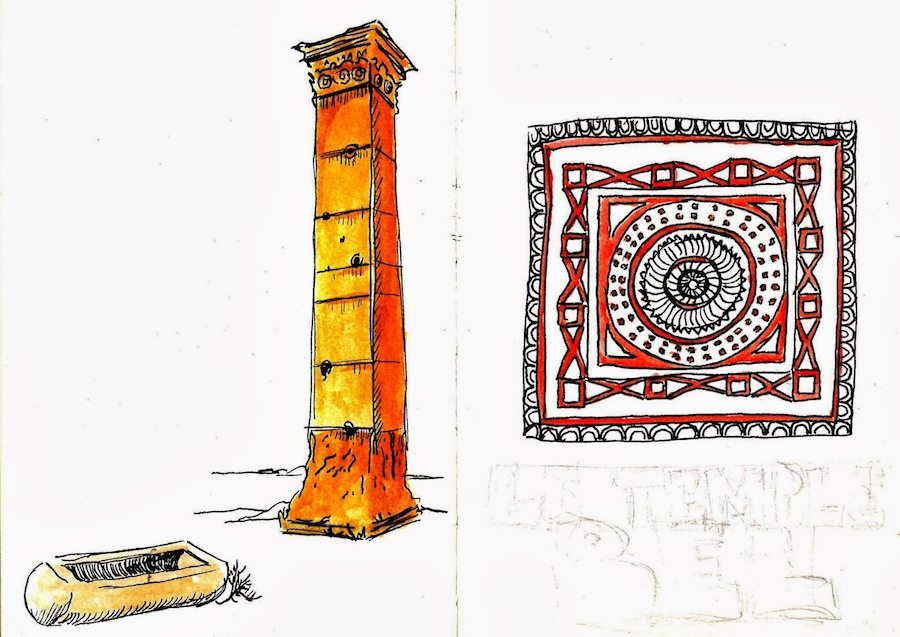Sketches from Syria
in 2010
In February 2010, François Canavaggio, a French lawyer and painter, received a postcard from his friend Samir, a Belgian of Moroccan descent, who was staying in Damascus for a few months to take Arabic classes. The postcard depicted the Umayyad Mosque, and on the back Samir had written: “Come here with your paintbrushes my friend!”
François isn’t much of a world traveller, but he says, “I felt innately that I had to go discover Syria right away.” Even coming from a Corsican background, he had never seen “the other side” of the Mediterranean. In March, François left for Syria for a month, with his paintbrushes and a sketchbook he had bought for the trip. His drawings, featured on his blog depict both everyday life and historical landmarks from Damascus, Palmyra and Aleppo. Nowadays, it’s hard not to look at these observations of ordinary life without a sense of deep nostalgia.
For François, Damascus was “the epitome of rich heritage, diversity, and above all, brotherhood. I never found another place so full of curiosity, intellectual abundance, and tenderness.” His drawings depict some of the many characters of Damascus, the service drivers, barbers, members of the Syrian diaspora returning to become acquainted with the country of their parents, and the community of Europeans of North African descent, who had come to learn Arabic in Syria, known for its insistence on speaking the language without the heavy substitution of French and English words as in other Arab countries.
“Everywhere I stopped to draw, people came to watch, with such a sincere and innocent interest in what I was doing.” One day, François decided to draw Bashar al-Assad in his notebook, but he says, “I didn’t dare finish my drawing.” Everyone who looked at the page, frowned and asked why he wanted to draw such an image, and told him to be careful. François was confused at the time: “Every shop in this souk has a large photo of the President, and I don’t have the right to sketch a drawing in my little personal notebook?” In retrospect, he admits that a drawing does not have the same objectivity of a photo. The drawing of the President remains the only unfinished drawing in his sketchbook. “I felt I had prodded a bit too far.”
François has continued to follow news from Syria since his return to Paris in April 2011. “I am so saddened by the situation, but I am happy that my notebook was able to transcribe all these beautiful things that I will never again be able to see except in my heart.”
April 2010 – My hotel in Palmyra is disgusting. No paper in the toilets, no towels to dry myself after the shower. I am drying myself with a sheet.

The street of Samir – Nom=Sleep; Chair; Mai=Water.

I go to the barber’s chair after Samir. He puts wax on the yellow areas. He rips out everything four times from each side. It hurts eight times. (Slender eyebrows) (The tools of Talib, the barber). My phone, I hold it tightly because I am scared. Vapor-blowing machine.

I went with Phillipe and Samir to watch the sunset from the rooftop of Aleppo.

At the bus station going back to Damascus, I meet Laura, an English woman coming from Beirut, and Farisa, a German of Syrian descent who lives in Damascus. Farisa is the third contact in my Syrian phone. Coming back, I take a shower. I have a farmer’s tan. At the restaurant, I order two local beers, Al-Barada. The two bottles, from the same brand, are different and don’t have the same taste.









